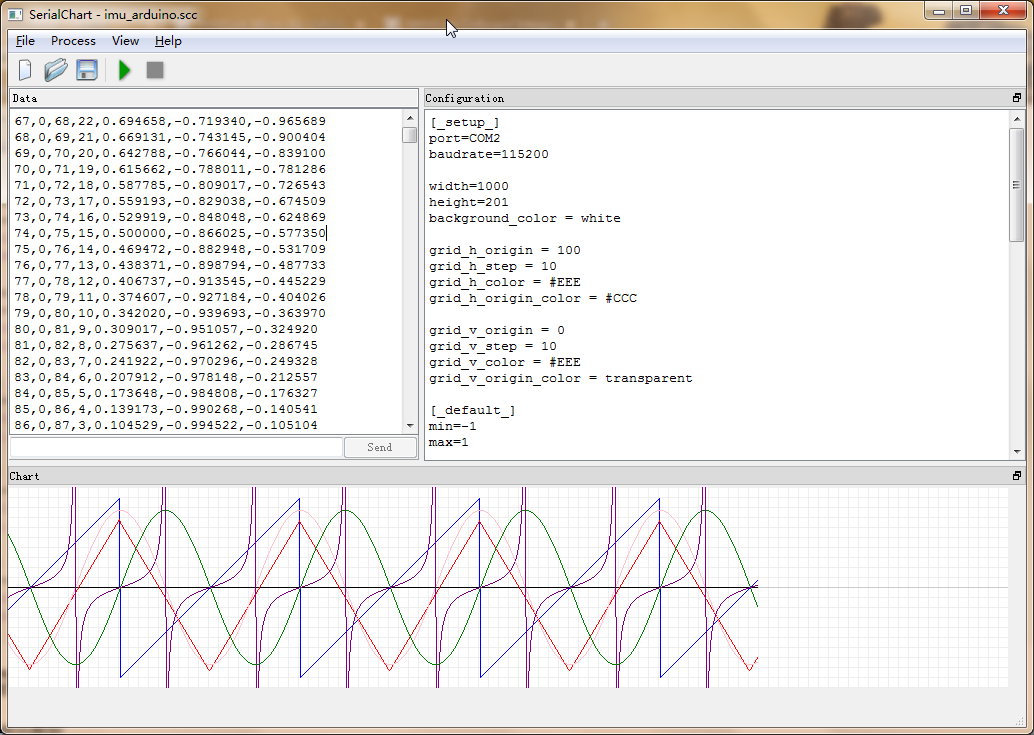
2. 串口程序
while(1){
if(++x>=180){
y = 90;
x = 0;
}
if(x>=90) y++;
else y--;
z = sin(x*Pi/90);
p = cos(x*Pi/90);
r = tan(x*Pi/90);
printf("%d,%d,%d,%d,%f,%f,%f
",t,0,x,y,z,p,r);
delay_ms(50);
t++;
}
3. 数据格式
|
Interval |
, |
Dat1 |
, |
Dat2 |
, |
。。。 |
Datn |
, |
|
数据以帧为单位,其中Interval设为整形即可,用处是用来分辨当前数据是那一时刻的数据,你也可以用来显示,甚至不用Interval(把它当成一个通道的数据),例子中Interval的值设置为了transparent,即不显示。
Dat是你想用来显示的数据,最多支持多少没有测试,不够是够用了。
最后‘ ’代表着该帧的结束
总结一下
- 通过 ‘,’ 来区分不同通道数据,从前往后依次为通道“1...n”。
- 通道1,一般用来作为时间标志来确定那一时刻的数据,也可作序列号来确定丢包率。
- 通道2..n,根据自己需要配置
- 最后输出换行符 ' ' 作为帧结束标志
4. 配置
[_setup_] port=COM2 baudrate=115200 width=1000 height=201 background_color = white grid_h_origin = 100 grid_h_step = 10 grid_h_color = #EEE grid_h_origin_color = #CCC grid_v_origin = 0 grid_v_step = 10 grid_v_color = #EEE grid_v_origin_color = transparent [_default_] min=-1 max=1 [interval] color= transparent min=0 max=500 [level] color=black [sawtooth] color=blue min=-10 max=190 [triangular] color=red min=-10 max=110 [sin] color=green min=-1.3 max=1.3 [cos] color=pink min=-1.3 max=1.3 [tan] color=purple min=-10 max=10
